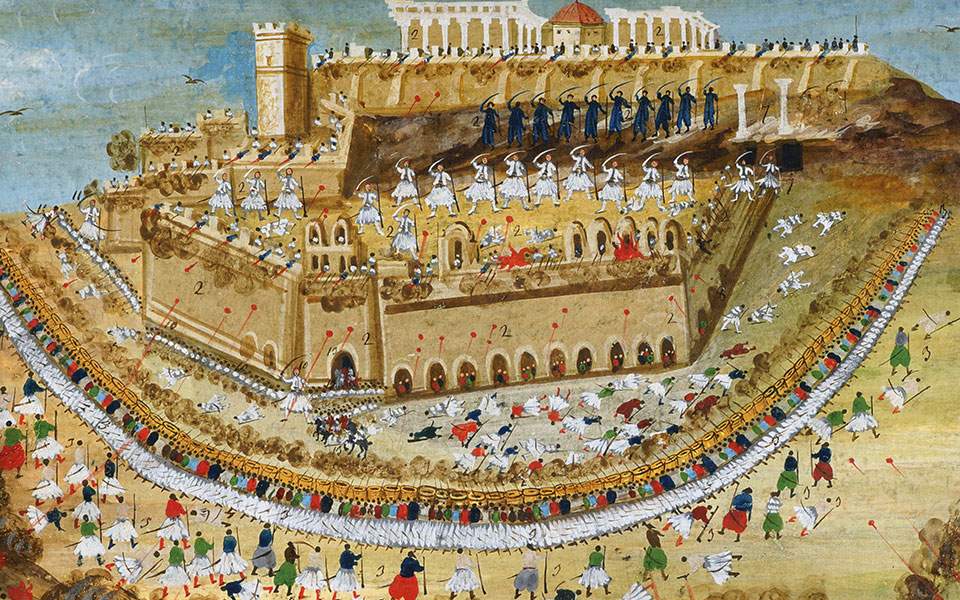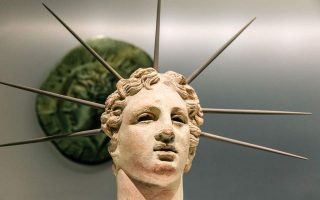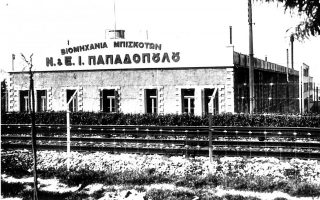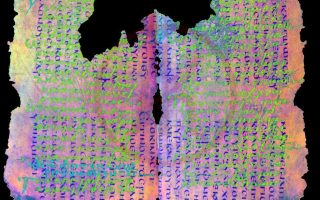Gennadius Library hosts tribute to Ioannis Makriyiannis

Walking through the iron gate and into the pretty garden of the Gennadius Library feels like stepping into a literary adventure. According to its director, Maria Georgopoulou, “there is always the possibility that right beside the book you are looking for, you may find the one you were supposed to find.”
In my case, it wasn’t a book, but an exhibition, tucked away in an elegant room in the west wing of the historic building in the leafy Kolonaki district of central Athens. “Ioannis Makriyiannis: Vital Expression,” running through September 29, is the first of a series of exhibitions being planned at the library of the American School of Classical Studies at Athens. How it came about is fascinating.
It was March 1839 and General Ioannis Makriyiannis was hosting a rich banquet at his Athens home near the Temple of Olympian Zeus, attended by 250 distinguished guests, from foreign diplomats in tailcoats to chieftains in foustanellas. Makriyiannis had organized this lavish gathering to formally unveil a series of 25 paintings on the 1821 Greek War of Independence that he had commissioned from folk artists Panagiotis and Dimitrios Zografos featuring scenes of battle as described in his “Memoirs.” He also wanted to gift copies of the egg tempera-on-wood paintings to the leaders of the three big powers – Britain, France and Russia – as well as to Greece’s King Otto.
Makriyiannis achieved his mission, though his gifts appear to have not been greatly appreciated: With the exception of the series that was sent to Queen Victoria and is currently at Windsor Castle, the other three were quickly lost.
That was until the spring of 1909, when Joannes Gennadius saw an auction catalogue advertising the sale of 24 “coarse watercolors on cardboard by a Greek general who took part in the wars of independence.” How these paintings – which were the ones given to Otto – had ended up in Italy is another charming story, which we will not get into here. What matters is that Gennadius bought the series, which can now be viewed at his library, alongside other related items on loan from the National Historical Museum, the Historical Archives of the Benaki Museum, the General Archives of the State and the Sylvia Ioannou Foundation.
The distinguished painter Yiannis Tsarouchis once described Panagiotis Zografos’s work as “naive and wise,” while poet Giorgos Seferis hailed the series for the exceptional detail with which they depict the scenes narrated by Makriyiannis, but also for their esthetic value.
These paintings are augmented by other exhibits that transport visitors to the period of modern Greece’s birth, as it struggled to build a new identity.
The catalogue by Kapon, in Greek and English, is equally beautiful, and contains a wealth of information and analyses on Makriyiannis.
Library renovation
I head to Georgopoulou’s office in the main building of the Gennadius Library, a colonnaded neoclassical edifice that was built in 1926 to house the significant donation of 26,000 books from the diplomat and intellectual Joannes Gennadius to the American School. The heavy wooden door of her office prevents our conversation from disturbing the researchers who are busy in the reading area. Our discussion centers on the work that is being carried out to bring the library into the 21st century, as she says, by modernizing how it operates, bolstering its role as a center of research and helping it become a more active proponent in the Greek capital’s cultural life.
The library has been extended, modified and renovated several times over the decades in order to better accommodate its priceless collection. This now comprises 130,000 tomes, as well as rare bindings, archives, manuscripts and works of art that relate to Greece’s Byzantine and modern history. The changes it has undergone also reflect those experienced by Athens over the past century. “When Gennadius started the library in the mid-1920s, it would get just two or three visitors a week because it was too far from the city center,” says Georgopoulou.
“The library started to grow in the 1950s, when Athens also started to change completely. Apart from that, the original collection was enriched with donations of archives and manuscripts, so two new wings were added in the 1960s to the east and west of the main building,” she says.
“About 30 years later, it became evident that we needed even more space and better infrastructure. That triggered a project that took years to complete for basements beneath the older buildings to store books on rolling shelves. The more recent renovation of the west wing saw the addition of two additional basement areas for housing books and new reading rooms, which will soon allow readers at the Gennadius Library open access for the first time,” Georgopoulou adds.
The west wing also got the new Ioannis Makriyiannis Wing, which is where the exhibition is taking place, while there are plans for it to host a few theme-specific shows every year. “We want them to reflect who we are: We are a scientific institution and what we do well is related to the letters.”
Gennadius Library, 61 Souidias, Kolonaki, tel 210.721.0536. Opening hours are Tuesday-Wednesday & Friday-Saturday 11 a.m. – 5 p.m., and Thursday 1-8 p.m. Admission is free of charge.





